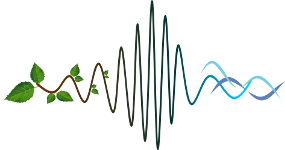Increasing human development in coastal regions and associated loss of habitat and biodiversity have led to an urgent need for techniques that can quickly assess changes in the composition of marine ecological communities. Many marine animals use sounds in different contexts, such as navigation, foraging, and reproduction. These vocalizations can provide valuable information about the occurrence, distribution, and relative abundance of species. However, species-specific detection approaches are time-consuming and often infeasible on larger temporal and spatial scales. In this study we will explore the capacity of acoustic biodiversity indices, originally developed for terrestrial applications, to reflect seasonal patterns in the relative abundance of vocally active marine animals in the Stellwagen Bank National Marine Sanctuary (SBNMS). SBNMS comprises an important spawning ground for soniferous fish species such as cod and haddock and a major summer feeding habitat for North Atlantic humpback whales. At least four other baleen whale species, including endangered North Atlantic right whales, use the sanctuary seasonally during migration. Spatial and temporal differences in the relative abundance of these diverse taxa should thus be reflected in the overall soundscape of the SBNMS. Year-round, low-frequency acoustic recordings have been collected at various locations throughout the sanctuary for over eight years. A subset of these data, reflecting different seasonal and spatial scenarios, will be analyzed using several acoustic metrics and indices with the aim to explore patterns of general bioacoustic activity. The resulting patterns will be correlated to biological and anthropogenic sources, through comparison to species-specific detections and visual sightings, as well as shipping traffic. In addition, these results will be used to support larger-scale modeling efforts using geospatial data and machine learning techniques to explore how various biological, physical and anthropogenic factors influence marine soundscapes.
|
|
|
|
Wednesday
18
Applications IV
› 12:00 - 12:15 (15min) › Grande Galerie Evolution Conference Hall
Assessing changes of animal diversity in the ocean: the application of acoustic indices to monitor bioacoustic activity in a marine sanctuary
1 : US National Oceanic and Atmospheric Administration/Northeast Fisheries Science Center
(US NOAA/NEFSC)
-
Website
NOAA Fisheries Northeast Fisheries Science Center, 166 Water Street, Woods Hole, MA 02543 -
United States
2 : NOAA Northeast Fisheries Science Center
(NOAA/NEFSC)
166 Water Street, Woods Hole, MA02543 -
United States
3 : NOAA NOS Stellwagen Bank National Marine Sanctuary
(NOAA/NOS/SBNMS)
175 Edward Foster Road, Scituate, MA 02474 -
United States
4 : Natural Sounds Program Center, National Park Service
(NPS)
1201 Oakridge Drive, Suite 100, Fort Collins, CO 80525-5596 -
United States
5 : NOAA Northeast Fisheries Science Center
166 Water Street, Woods Hole, MA02543 -
United States
|
| Online user: 1 | RSS Feed |

|

 PDF version
PDF version